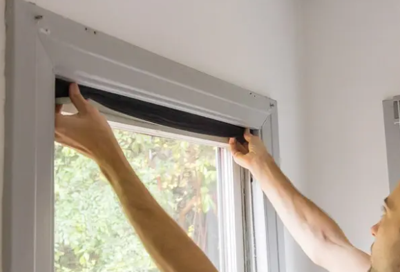
Blockout screens can make a big difference in how a room feels. With the right setup, it’s easier to control light, heat, and privacy. Some screens work better than others, but most issues come down to how they’re used. To get the most out of a blockout screen, this article provides some simple yet essential tips that can help you improve the comfort, energy use, and room function all at once.
1. Measure the Window Carefully Before Installing
Before doing anything, it’s important to make sure the blockout screen fits the window exactly. If the screen is too small, light can sneak in through the sides. However, if it’s too large, it may bunch up or hang unevenly. Always remember to check the width and height of the window with a measuring tape.
2. Choose a Screen With Quality Materials
Keep in mind that the fabric or material used in the screen matters a lot. Thicker fabrics tend to block more sunlight and heat. While some even help insulate the window. When picking a screen, look for one that feels sturdy but not too heavy. Additionally, a good blockout screen should hang flat and smooth.
3. Keep the Screen Clean for Better Performance
Dust and dirt can build up on the screen, especially near windows that are often open. Over time, a dusty screen won’t block light as well. Cleaning the screen every few weeks helps keep it working properly. Using a soft brush or a gentle vacuum setting is usually enough. Keeping the screen clean helps it last longer and keeps the room looking fresh.
4. Ensure the Screen Is Installed Close to the Wall
If there’s a gap between the screen and the wall, light can pass through the sides and reduce its effect. Using mounting hardware that holds the screen tightly in place helps solve this problem. Most screens are made to fit inside the window frame, while others work better when mounted just outside of it.
5. Use the Screen at the Right Times During the Day
At night, pulling it down keeps light out and improves privacy. On cloudy days, raising the screen can bring in natural light without adding too much heat. Using the screen based on the time of day helps keep the room more comfortable and may even reduce the need for fans or air conditioning.
6. Pair the Screen With Curtains for Better Insulation
While a blockout screen works well on its own, adding curtains can make it even more useful. Thick curtains trap air between the screen and the room, which keeps hot or cold air from moving around too much. Plus, the blockout screen gives the room a finished look and can match the rest of the decor.
7. Check for wear and replace when needed
Take note that if the blockout screen for windows doesn’t roll up smoothly or looks damaged, it may be time to replace it. Keeping an eye on the condition of the screen helps avoid problems before they get worse. Don’t forget that a screen that works well always performs better and gives better results.
Let Your Blockout Screen Do Its Part!
Using these simple tips, a blockout screen can do more than just block light. Investing in a blockout screen can help keep a room cooler, save on energy, and improve sleep or work spaces. With a good fit, regular care, and smart use, the screen becomes a helpful tool in everyday life. On top of that, every little change adds up, and once the setup is right, it’s easy to enjoy the comfort and benefits that follow.
Related Articles:
- Top Reasons Why Blinds Are Perfect for The Home
- Understanding The Advantages of Light-Filtering and Blackout Blinds



(0) comments
We welcome your comments
Log In
Post a comment as Guest
Keep it Clean. Please avoid obscene, vulgar, lewd, racist or sexually-oriented language.
PLEASE TURN OFF YOUR CAPS LOCK.
Don't Threaten. Threats of harming another person will not be tolerated.
Be Truthful. Don't knowingly lie about anyone or anything.
Be Nice. No racism, sexism or any sort of -ism that is degrading to another person.
Be Proactive. Use the 'Report' link on each comment to let us know of abusive posts.
Share with Us. We'd love to hear eyewitness accounts, the history behind an article.